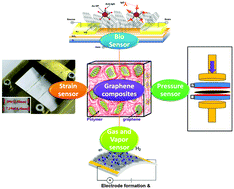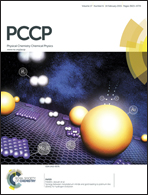Graphene and graphitic derivative filled polymer composites as potential sensors
Abstract
Graphite and numerous graphitic-derived micro- and nano-particles have gained importance in current materials science research. These two-dimensional sheets of sp2-hybridized carbon atoms remarkably influence the properties of polymers. Graphene mono-layers, graphene oxides, graphite oxides, exfoliated graphite, and other related materials are derived from a parental graphite structure. In this review, we focus primarily on the role of these fillers in regulating the electrical and sensing properties of polymer composites. It has been demonstrated that the addition of an optimized mixture of graphene and or its derivatives to various polymers produces a record-high enhancement of the electrical conductivity and achieved semiconducting characteristics at small filler loading, making it suitable for sensor manufacture. Promising sensing characteristics are observed in graphite-derived composite films compared with those of micro-sized composites and the properties are explained mainly based on the filler volume fraction, nature and rate of dispersion and the filler polymer interactions at the interface. In short, this critical review aims to provide a thorough understanding of the recent advances in the area of graphitic-based polymer composites in advanced electronics. Future perspectives in this rapidly developing field are also discussed.


 Please wait while we load your content...
Please wait while we load your content...